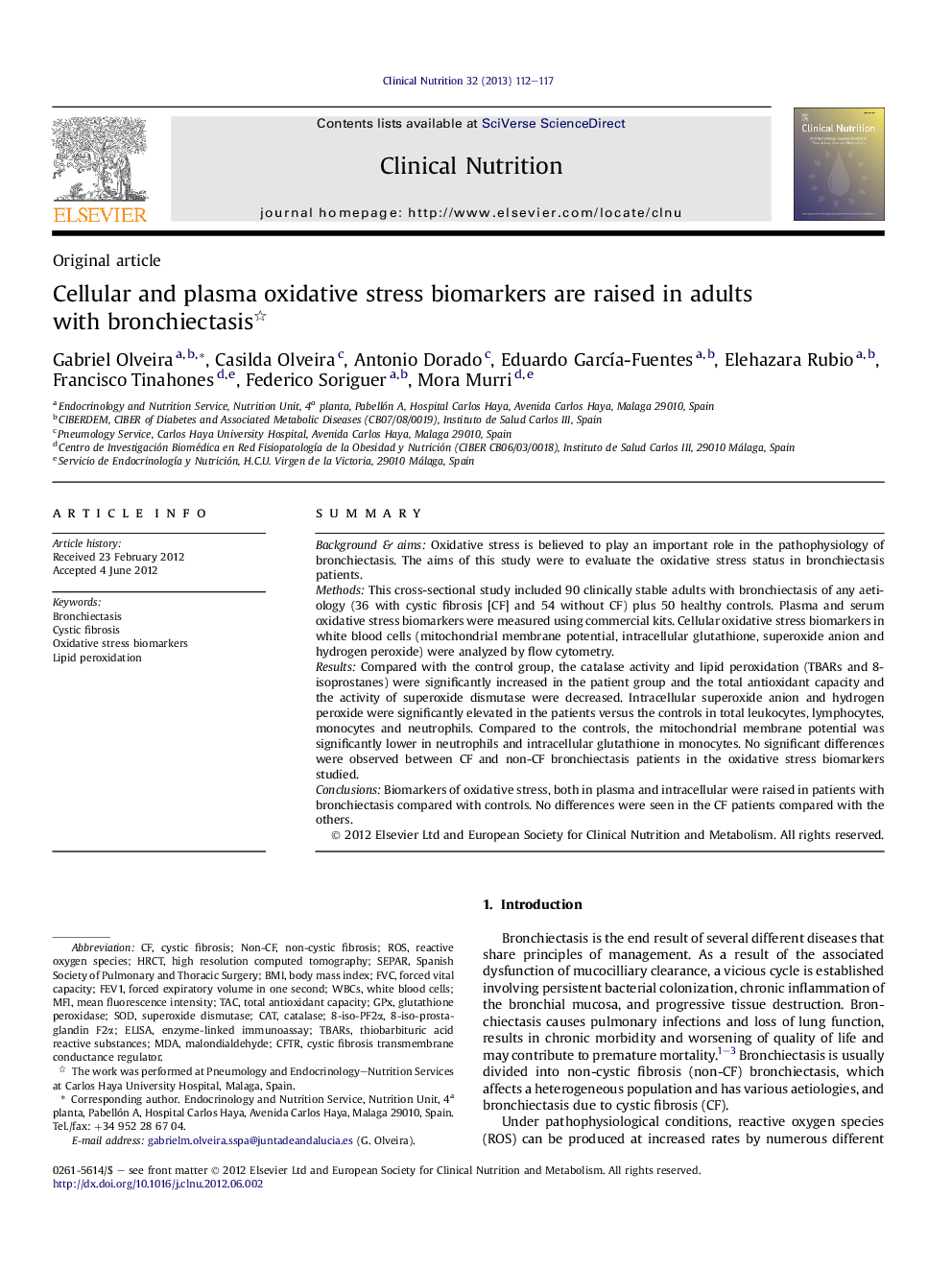| Article ID | Journal | Published Year | Pages | File Type |
|---|---|---|---|---|
| 2687039 | Clinical Nutrition | 2013 | 6 Pages |
SummaryBackground & aimsOxidative stress is believed to play an important role in the pathophysiology of bronchiectasis. The aims of this study were to evaluate the oxidative stress status in bronchiectasis patients.MethodsThis cross-sectional study included 90 clinically stable adults with bronchiectasis of any aetiology (36 with cystic fibrosis [CF] and 54 without CF) plus 50 healthy controls. Plasma and serum oxidative stress biomarkers were measured using commercial kits. Cellular oxidative stress biomarkers in white blood cells (mitochondrial membrane potential, intracellular glutathione, superoxide anion and hydrogen peroxide) were analyzed by flow cytometry.ResultsCompared with the control group, the catalase activity and lipid peroxidation (TBARs and 8-isoprostanes) were significantly increased in the patient group and the total antioxidant capacity and the activity of superoxide dismutase were decreased. Intracellular superoxide anion and hydrogen peroxide were significantly elevated in the patients versus the controls in total leukocytes, lymphocytes, monocytes and neutrophils. Compared to the controls, the mitochondrial membrane potential was significantly lower in neutrophils and intracellular glutathione in monocytes. No significant differences were observed between CF and non-CF bronchiectasis patients in the oxidative stress biomarkers studied.ConclusionsBiomarkers of oxidative stress, both in plasma and intracellular were raised in patients with bronchiectasis compared with controls. No differences were seen in the CF patients compared with the others.
